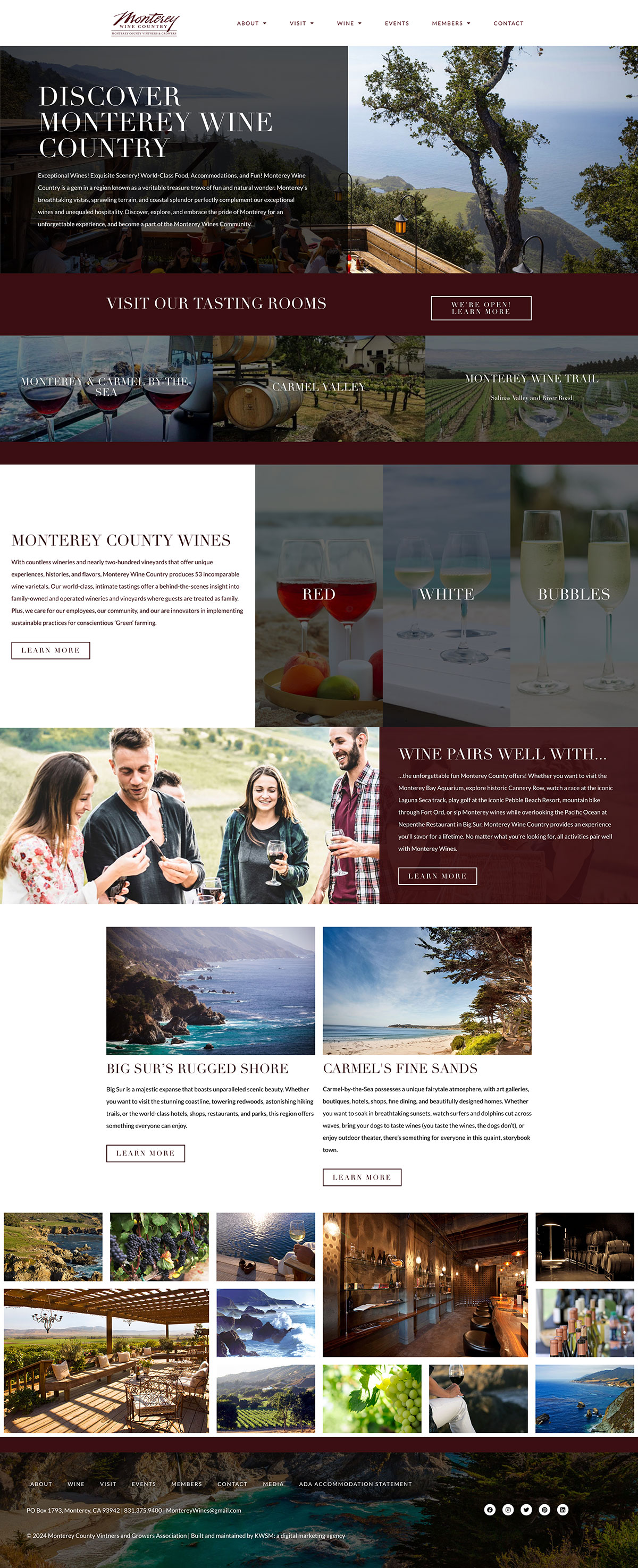
What is Brand Journalism?
KWSM’s Brand Journalism involves strategic storytelling: speaking directly to the target audience and telling the tale of how a product or service will transform their lives for the better. It touches on the audience’s problems and speaks to their pain points, but the main focus should be on painting a clear picture of how amazing their life will be once the service or product has improved it.
Brand Journalism also incorporates Google’s E-E-A-T (Experience, Expertise, Authoritativeness, and Trustworthiness) guidelines for helpful content. A website must signal that a company has all of these elements for maximum credibility. Proof of longevity, reviews, testimonials, case studies, awards, affiliations, and educational pieces such as blogs or downloadables can indicate your company’s standing as an industry leader.
As a Web Designer, Developer, and UX Specialist on both the Strategy and Web Teams at KWSM, my job uniquely positions me to implement crucial aspects of our Brand Journalism approach into our website designs.
How Do We Incorporate Brand Journalism Into Web Design?
With so many different elements involved, challenges often arise. The two that I encounter most frequently when incorporating Brand Journalism in web design are:
- The number of complex principles involved
- The intricate dance between designers and copywriters.
1. Effective Website Design Involves Many Moving Parts
Many different elements must work together seamlessly to create an effective website. Incorporating aspects of Brand Journalism into a design adds another layer of complexity. We must also balance those best practices for UX/UI design, graphic design, website development, SEO, copywriting, and information architecture with a client’s wants and needs.
2. Website Design or Website Copy—What Comes First?
Two people must work very closely together at the beginning of the website build process—the web designer and the copywriter.
Copywriters find inspiration in a beautifully completed mockup, and web designers dream of starting a mockup with a fully-written text to base their concepts on. Yet neither of those methods will produce the strongest result.
In my experience, I’ve found that sketching out a wireframe drawing that indicates where the headers and text will go, along with notes about what the content should include, is the best approach. This allows the copywriter to start working while I move on to the mockup. However, it can be time-consuming to do this sketching, especially when it involves constantly referencing a laundry list of Brand Journalism best practices. Instead of creating a new sketch for every website, I wanted to create a wireframe template featuring all the necessary elements that could be used as a guide by web designers and copywriters alike.
Vision Hour Goal: Create A Brand Journalism Wireframe Template
This new template needed to be simple and easy to use, with writing prompts for the copywriters and all of the sections required for the designers to create. I found a great free web application that allowed the sharing of the wireframe templates as links or PDFs.
To determine what should go in the wireframes, however, I worked with KWSM Copywriter Josh Rodriguez. Step by step, Josh and I went through a client’s Home page and landing page to work out where each part of the audience’s story should go. When that was complete, I sorted through the elements that would need to be included for E-E-A-T, such as client logos, testimonials, a blog feed, and so on.
“Throughout the process, we got into the finer details of the customer journey and how you can use Brand Journalism to speak directly to the audience. For me, one of the most beneficial parts of this learning experience was being able to map out each ‘plot point’ in the visitor’s journey, from the Hero at the top to the CTA at the bottom. I’m not a very visual person, but this approach, especially the wireframe, was something of a ‘eureka!’ moment and made it easy to understand. This was a great exercise in understanding how design and copywriting feed into each other, and understanding the impact of design has made me a better writer.”
– Josh Rodriguez, Copywriter, KWSM
It was a great collaborative learning experience that resulted in our creating a valuable guide for web designers and copywriters to use when implementing Brand Journalism into a website’s design.
Build a Brand Journalism-Powered Website with KWSM
To successfully implement Brand Journalism in web design, you must also follow best practices to optimize your website for UX/UI, design, development, and SEO. With so many moving parts that both interact and intersect with one another, creating an effective website design requires careful planning. But the results are worth it for websites that convert! If you’d like to know how KWSM’s Brand Journalism can transform your website into one that converts, reach out to us.










